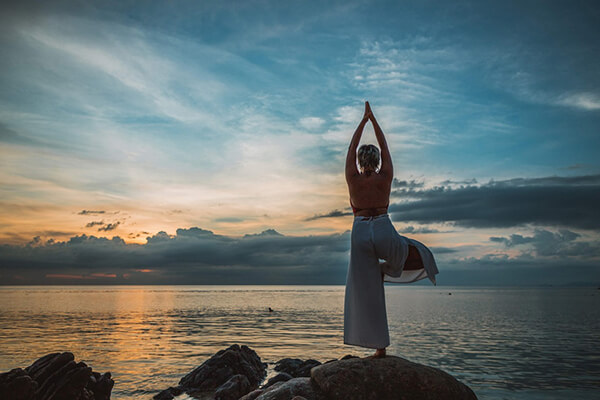Yoga is widely recognized as an effective method for dieting and fitness. However, what we commonly call yoga comes in many different forms. Initially a mental discipline, yoga includes a variety of practices that have evolved from its traditional postures. Modern yoga has largely stripped away its spiritual aspects, meaning traditional yoga is not designed for weight loss. Let’s look at the different forms of yoga that have been adapted over time.
Mantra Yoga

Mantra yoga is a practice rooted in Indian yoga scriptures. It focuses more on meditation than physical movement. This form of yoga involves chanting specific sounds, which are believed to transfer their power to the body and mind while exerting energy outward. It is meant to use sound to achieve inner enlightenment and protect one’s inner wisdom from external threats. Commonly used sounds include “Om” and “Om Mani Padme Hum,” which are thought to purify the body and mind.
Hatha Yoga

Hatha yoga emphasizes the balance between yin and yang. In South Korea, it typically involves holding a single posture for an extended time using deep breathing. Poses may be held for anywhere from 3 to over 15 minutes. The practice encourages stillness, allowing practitioners to focus on their bodies and release muscular tension. Though it lacks the intensity or large movements of other yoga types, it enables deep focus on the self.
Raja Yoga

Raja yoga is considered one of the four classical types of yoga. Its purpose is to achieve spiritual liberation through training the body and mind. Many modern yoga styles used for weight loss fall under Raja yoga. Raja means king in Sanskrit, and Raja yoga is often called the king of all yogas. Another theory is that it got its name because a king once wrote commentaries on the Yoga Sutras.
Classic Pilates

German-born Joseph Pilates created Pilates, which was initially used as a rehabilitation program for prisoners of war during World War I. Although it’s now seen as a low-impact workout, the original version, “Classical Pilates,” retains the structure and techniques Joseph Pilates devised. The equipment used in classical Pilates features strong resistance, making it a relatively difficult form to master.
Modern Pilates

Modern Pilates, also called Contemporary Pilates, is the mainstream style most people are familiar with. Penelope Latey, a former dancer who collaborated with her physician husband, developed it. The method is known for its therapeutic benefits and incorporates various equipment not found in classical Pilates. Group programs are also more widely available.
Hot Yoga

Hot yoga is practiced in environments resembling India’s high heat and humidity. It consists of 26 poses and two breathing techniques. The high temperature helps relax muscles and reduces the risk of injury, enhancing flexibility and performance. Because of the profuse sweating involved, it’s considered effective for weight loss. A 90-minute hot yoga session can reportedly burn up to 600 calories.
Power Yoga

Power yoga deviates from traditional yoga’s calm, meditative aspects by integrating powerful strength-building movements. It combines weight training with breathing techniques and mental focus. This style helps improve lung capacity, stamina, muscle strength, and flexibility. It also supports better posture and overall body balance, making it an effective workout for those seeking.
Vinyasa Yoga

Vinyasa yoga involves a sequence of connected movements performed rhythmically within a set time. Vinyasa means flow, and the practice centers on a fluid series of asanas, or yoga poses. Emphasis is placed on the transitions between poses, maintaining focus, and synchronized breathing. This creates a dynamic, flowing experience that engages the entire body.
Healing Yoga

Healing yoga is one of the most accessible and widely practiced forms. It’s designed for all age groups and focuses on restorative movements. The practice aims to improve energy circulation throughout the body, eliminate toxins, and correct posture imbalances caused by bad habits. It’s highly recommended for beginners or those with limited flexibility who may struggle with more demanding poses.
DDP Yoga

Former professional wrestler Diamond Dallas Page created DDP Yoga. It eliminates traditional yoga’s spiritual and meditative components and focuses instead on intense physical training for rehabilitation and fitness. The method gained popularity after numerous former athletes who could barely walk reportedly regained their health through DDP Yoga. Page himself created the program after recovering from a herniated disc that developed during his wrestling career.















Most Commented